Combatants
We have invited world-leading early to mid career researchers to take part in our battles, whose biographies are provided below
Battle 1 - Tunnelling
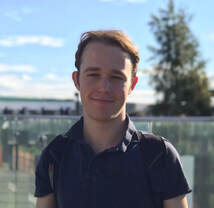
Alexander Bray
(Australian National University) Alex has recently submitted his PhD in computational strong-field and ultrafast physics, working on topics ranging from the attoclock, RABBITT, and centre-of-mass spectroscopy in strong-field excitation. This and other work has led to over 15 publications, including a 'first-author' PRL selected as a Editors' suggestion, and the opportunity to give presentations across 6 countries. He is currently a postdoc at the Australian National University and has spent time at the Max Born Institute in Berlin. Google scholar: https://scholar.google.com.au/citations?user=ZLJSWlAAAAAJ |
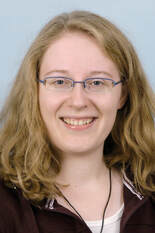
Cornelia Hofmann (University College London)
Dr. Cornelia Hofmann completed her PhD thesis “Attosecond electron dynamics in strong-field ionization” at ETH Zurich at the end of 2016. Subsequently, she moved to the Max Planck Institute for the Physics of Complex Systems in Dresden, focusing further on the temporal resolution of ionisation processes, phase matching effects during High Harmonic Generation (HHG), and the interplay of the Coulomb potential with tailored or spatially non-homogeneous fields. In 2020 Dr. Hofmann moved to University College London on a Postdoc Fellowship by the Swiss National Science Foundation. She joined the group of Prof. Carla Figueira De Morisson Faria, investigating new aspects of the Coulomb-induced phase and trajectory correction for photoelectron momenta studies as well as HHG processes. Link: https://www.corneliahofmann.com/ |
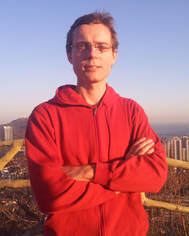
Werner Koch
(Weizmann Institute of Science, Israel) Werner Koch did his undergraduate and doctoral studies at the Technische Universität Dresden (Germany) under the supervision of Frank Grossmann. He has been involved with the development of quantum wavepacket propagation techniques for atomic and molecular physics using classical and quantum trajectory approaches at the Australian National University (Australia), the Dalian Institute of Chemical Physics (China) and the Weizmann Institute of Science (Israel). His main interests are split between investigating the nature of quantum phenomena in strong field atomic physics and describing the dynamics of non-adiabatic transitions in chemical physics. |
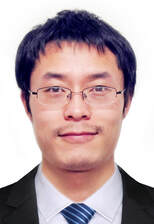
Hongcheng Ni
(Vienna UIniversity of Technology) Hongcheng Ni did his undergraduate studies at the Nanjing University (China), got his PhD at the University of Colorado Boulder (USA) under supervision of Prof. Andreas Becker, was a PostDoc (Humboldt Fellow) at the Max Planck Institute for the Physics of Complex Systems in Dresden (Germany) in the group of Prof. Jan-Michael Rost, and is a PostDoc (Meitner Fellow) at the Vienna University of Technology (Austria) in the group of Prof. Joachim Burgdörfer. He recently joined the East China Normal University (Shanghai, China) as a Junior Research Professor. Hongcheng Ni is interested in Ultrafast Optics, Attosecond Physics, Strong-Field Physics, and Theoretical AMO Physics. He currently has open positions for postdoctoral researchers, please refer to his home page at http://concord.itp.tuwien.ac.at/~nih/ |
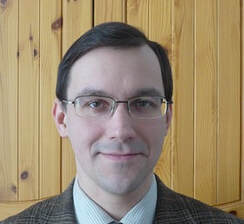
NIkolay Shvetsov-Shilovski (University of Hanover)
Dr. Nikolay Shvetsov-Shilovskiy received his Ph.D. in Theoretical Physics in the research group of Prof. Dr. Sergei Goreslavski at Moscow Engineering Physics Institute (MEPhI) in 2005. As early as the beginning of his Ph.D. project, Nikolay Shvetsov-Shilovskiy developed a new theoretical model for including effects of the Coulomb potential in the description of laser-atom interaction and proposed a numerical algorithm implementing this model. Following the defense of his Ph.D. thesis, Dr. Nikolay Shvetsov-Shilovskiy got a permanent position at the Department of General Physics of MEPhI. After a promotion in 2009 he became an Associate Professor, and his individual research project was supported by Russian Foundation for Basic Research. However, he had too little time for his own independent research. The reasons for this were huge administrative duties that he had to perform at the Department. He quit from his position, in order to extend his scientific outlook, develop his individual research profile, and gain international experience.
In 2010 Dr. Nikolay Shvetsov-Shilovskiy joined the group of Prof. Dr. Gerhard Paulus at the Institute of Optics and Quantum Electronics at Friedrich-Schiller-University Jena as a postdoc. His work as a theoretician in this experimental laboratory was an invaluable experience for him. The result of his work in the group of Prof. G. G. Paulus was a large research project investigating sequential multiple ionization in an intense few-cycle laser pulse. In 2011-2012 Dr. Shvetsov-Shilovskiy was a postdoc in the theoretical group headed by Prof. Dr. Lars Bojer Madsen (Aarhus University, Denmark), where he worked on the study of multielectron effects in ionization by an elliptically polarized laser light and the ab-initio solution of the three-dimensional time-dependent Schrödinger equation. During the period 2013-2015, he was working in the group led by Prof. Esa Räsänen (Tampere University of Technology, Finland). In the group of Prof. E. Räsänen he worked on optimal control of high-harmonic generation and suppression of strong-field ionization by optimal pulse shaping.
Since 2015 Dr. Shvetsov-Shilovskiy has been working in the group headed by Prof. Dr. Manfred Lein at the Leibniz University Hanover. In the group of Prof. M. Lein he has focused on the development of the semiclassical two-step model for strong-field ionization (SCTS) and its applications. Among these are: strong-field holography with photoelectrons, multielectron polarization effects, ionization of molecules, etc. Presently Dr. Nikolay Shvetsov-Shilovskiy is working on his own independent research project supported by the German Research Foundation.
Dr. Nikolay Shvetsov-Shilovskiy received his Ph.D. in Theoretical Physics in the research group of Prof. Dr. Sergei Goreslavski at Moscow Engineering Physics Institute (MEPhI) in 2005. As early as the beginning of his Ph.D. project, Nikolay Shvetsov-Shilovskiy developed a new theoretical model for including effects of the Coulomb potential in the description of laser-atom interaction and proposed a numerical algorithm implementing this model. Following the defense of his Ph.D. thesis, Dr. Nikolay Shvetsov-Shilovskiy got a permanent position at the Department of General Physics of MEPhI. After a promotion in 2009 he became an Associate Professor, and his individual research project was supported by Russian Foundation for Basic Research. However, he had too little time for his own independent research. The reasons for this were huge administrative duties that he had to perform at the Department. He quit from his position, in order to extend his scientific outlook, develop his individual research profile, and gain international experience.
In 2010 Dr. Nikolay Shvetsov-Shilovskiy joined the group of Prof. Dr. Gerhard Paulus at the Institute of Optics and Quantum Electronics at Friedrich-Schiller-University Jena as a postdoc. His work as a theoretician in this experimental laboratory was an invaluable experience for him. The result of his work in the group of Prof. G. G. Paulus was a large research project investigating sequential multiple ionization in an intense few-cycle laser pulse. In 2011-2012 Dr. Shvetsov-Shilovskiy was a postdoc in the theoretical group headed by Prof. Dr. Lars Bojer Madsen (Aarhus University, Denmark), where he worked on the study of multielectron effects in ionization by an elliptically polarized laser light and the ab-initio solution of the three-dimensional time-dependent Schrödinger equation. During the period 2013-2015, he was working in the group led by Prof. Esa Räsänen (Tampere University of Technology, Finland). In the group of Prof. E. Räsänen he worked on optimal control of high-harmonic generation and suppression of strong-field ionization by optimal pulse shaping.
Since 2015 Dr. Shvetsov-Shilovskiy has been working in the group headed by Prof. Dr. Manfred Lein at the Leibniz University Hanover. In the group of Prof. M. Lein he has focused on the development of the semiclassical two-step model for strong-field ionization (SCTS) and its applications. Among these are: strong-field holography with photoelectrons, multielectron polarization effects, ionization of molecules, etc. Presently Dr. Nikolay Shvetsov-Shilovskiy is working on his own independent research project supported by the German Research Foundation.
Battle 2 - Quantum Interference & Imaging
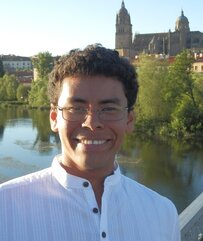
Alexis Agustín Chacón Salazar
(Max Planck Research-Initiative Korea) Alexis obtained his Bachelor degree in Physics at Universidad Autonoma de Chiriqui-Panama. During his Master and PhD studies at Universidad de Salamanca-Spain under the supervision of Prof. C. Ruiz and Prof. L. Plaja, he specialized in the physics of laser-matter interactions, in particular, the electron wavepacket characterization via attosecond quantum interferometry. He moved to the Quantum Theory group led by Prof. M. Lewenstein at ICFO to study the physics of high harmonic generation, single-, and two-photoelectron emission from atoms, small molecules and solids under strong field. Afterwards, he joined the LANL-USA to pursue ultrafast topological physics in topological materials. In particular, recently he shows that circular dichroism in the generation of high-harmonic can be used to map topological phases and transitions in the paradigmatic Haldane model. Since October 2019, he is a theory Group Leader at MPK (Korea), where his group supports the experimental efforts of Prof. D. Kim’s group in investigating how the Berry curvature, the topological invariants, the chirality of Weyl fermion particles, and the anomalous effects in TMDs, TIs, Weyl semimetals and other materials can be explored and controlled at their natural time scales (sub-femto-second) using ultrafast nonlinear spectroscopy. These research efforts are conducted in joint collaboration with the group of Prof. A. Rubio at MPI-SD-Hamburg and abroad. |
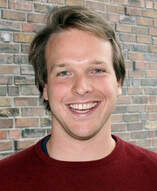
Sebastian Eckart (University of Frankfurt)
Sebastian Eckart has studied physics at the University of Konstanz (Germany). During his master thesis he worked on the ultra-sensitive detection of THz fields. Since 2015 Sebastian Eckart is working at the University of Frankfurt (Germany) in the group of Prof. Reinhard Dörner and experimentally and theoretically investigates strong field ionization of single atoms and small molecules. His research interests include non-sequential double ionization, sub-cycle interference and non-adiabatic tunneling. He finished his PhD in 2019 and currently works as a PostDoc on a better understanding of holographic angular streaking of electrons (HASE, see https://arxiv.org/abs/2003.07249). 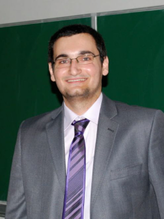
Benjamin Fetic (University of Sarajevo)
Benjamin Fetić completed his Master and PhD thesis at the University of Sarajevo working in the theoretical group of Prof. Dejan B. Milošević. The focus of his research is improving existing and development new numerical methods for solving time-dependent Schrödinger equation for studying interaction of atomic and molecular targets with a strong laser fields with the emphasis on processes such as high-order harmonic generation and above-threshold ionization. He currently works at the Department of Physics at University of Sarajevo. Google Scholar profile: https://scholar.google.com/citations?user=2K-uTSwAAAAJ&hl=en |
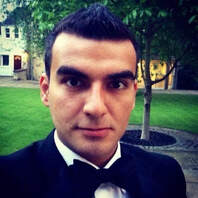
Kasra Amini (ICFO)
Dr Kasra Amini completed his D.Phil in Physical and Theoretical Chemistry at the University of Oxford in 2017 studying ultrafast molecular photofragmentation and dynamics using table-top and institutional free-electron femtosecond lasers. A rare commendation award from the Mathematics and Physical Life Sciences (MPLS) division was awarded for his excellent thesis work. Prior to this, he completed his joint honours MSci integrated Bachelors-Masters degree in Chemistry with Mathematics at University College London with first class honours. Following his D.Phil, he has worked as a postdoctoral researcher for two years and now is a research fellow at ICFO, Barcelona. His research interests include the study of coupled electron-nuclear dynamics with attosecond and picometre sub-atomic spatio-temporal resolution using electron diffraction and mid-infrared laser sources. Additionally, he is interested in unraveling the quantum dynamics of electron trajectories in few-cycle fields, advancing ultrafast electron diffraction towards the retrieval of both large complex molecules and time-resolving transient structures, as well as unravelling the mechanisms of various fundamental chemical reactions. Kasra also teaches the Masters course in Ultrafast Laser Physics at the Universitat Politècnica de Catalunya for the past three years.
Google scholar: https://scholar.google.co.uk/citations?user=mIl0WSYAAAAJ&hl=en
ORCID iD: https://orcid.org/0000-0002-2491-1672
ResearchGate: https://www.researchgate.net/profile/Kasra_Amini2
Dr Kasra Amini completed his D.Phil in Physical and Theoretical Chemistry at the University of Oxford in 2017 studying ultrafast molecular photofragmentation and dynamics using table-top and institutional free-electron femtosecond lasers. A rare commendation award from the Mathematics and Physical Life Sciences (MPLS) division was awarded for his excellent thesis work. Prior to this, he completed his joint honours MSci integrated Bachelors-Masters degree in Chemistry with Mathematics at University College London with first class honours. Following his D.Phil, he has worked as a postdoctoral researcher for two years and now is a research fellow at ICFO, Barcelona. His research interests include the study of coupled electron-nuclear dynamics with attosecond and picometre sub-atomic spatio-temporal resolution using electron diffraction and mid-infrared laser sources. Additionally, he is interested in unraveling the quantum dynamics of electron trajectories in few-cycle fields, advancing ultrafast electron diffraction towards the retrieval of both large complex molecules and time-resolving transient structures, as well as unravelling the mechanisms of various fundamental chemical reactions. Kasra also teaches the Masters course in Ultrafast Laser Physics at the Universitat Politècnica de Catalunya for the past three years.
Google scholar: https://scholar.google.co.uk/citations?user=mIl0WSYAAAAJ&hl=en
ORCID iD: https://orcid.org/0000-0002-2491-1672
ResearchGate: https://www.researchgate.net/profile/Kasra_Amini2
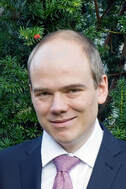
Matthias Kübel (University of Jena)
Matthias Kübel did his PhD at the Laboratory for Attosecond physics of the Max Planck Institute for Quantum Optics and the University of Munich. Subsequently, he won a Marie Skłodowska-Curie Global Fellowship and joined the Joint Attosecond Science Laboratory at the National Research Council of Canada in Ottawa, Ontario. Since 2018 he has been working at the Institute of Optics and Quantum Electronics at the University of Jena, Germany. His research interests include experiments for manipulating quantum dynamics in phase controlled laser fields, and imaging of electronic and nuclear dynamics in molecules with ultrahigh temporal resolution.
Battle 3 - Ab-initio vs analytic methods
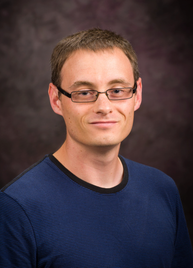
Greg Armstrong
(Queen's University Belfast) Gregory Armstrong gained his PhD at Queen’s University Belfast, studying strong-field ionisation of one- and two-electron atoms through numerical solution of the Schrödinger equation. He continued to work on few-electron systems during his subsequent postdoctoral position at Los Alamos National Laboratory, where he investigated double-ionisation dynamics induced by free-electron lasers. He has also investigated strong-field dissociation of diatomic molecules, including coherent control of dissociation using two-colour laser fields. In his current postdoctoral position at Queen’s University Belfast, he has investigated electron dynamics in multi-electron atoms driven by arbitrarily-polarised laser fields using the R-matrix with time dependence method. |
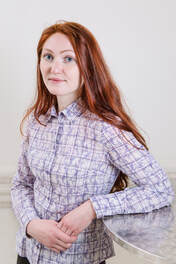
Margarita Khokhlova
(Max Born Institute Berlin) Margarita Khokhlova got her degree and PhD in physics at Lomonosov Moscow State University, where she worked on HHG mostly analytically but also numerically. She started working on many-body simulations during the postdoctoral position at Imperial College. Currently Margarita continues working on various light-matter interactions using both approaches as a Humboldt Fellow at Max Born Institute in Berlin |
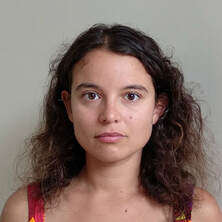
Marie Labeye (École Normale Supérieure)
Marie Labeye is a French teacher-researcher (maîtresse de conférences) in theoretical chemistry and attosecond science. She works at the École Normale Supérieure, in the Theoretical Chemistry group of the PASTEUR Laboratory. She comes from Grenoble, in the Alps and went to Paris in 2011 to study at the École Normale Supérieure, in the Chemistry Department. Between 2015 and 2018 Marie did a PhD in physics, on high-order harmonic generation at the Laboratoire de Chimie Physique – Matière et Rayonnement at Sorbonne University, in the group of Richard Taïeb, Jérémie Caillat, Alain Dubois and Alfred Maquet. In 2018/2019, she worked in Bâton Rouge as a postdoc researcher in the group of Ken Schafer and Mette Gaarde at Louisiana State University. Marie currently works at the École Normale Supérieure since 2019. |
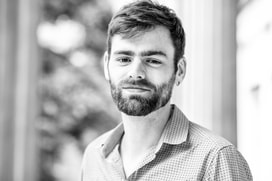
Andrew Stephen Maxwell (University College London)
Andrew Maxwell did his PhD at University College London (UCL) in interference of quantum trajectories with Coulomb distortions and electron correlation. He went on to do a two-year Engineering and Physical Sciences Research Council funded fellowship at the UCL quantum science and technology institute (UCLQ), investigating previously neglected quantum effects such as entanglement in strong field systems. From November he will start at postdoc at the Instituto de Ciencias Fotónicas (ICFO) in Barcelona and was also awarded a Marie Skłodowska-Curie Individual Fellowship to commence in 2021 at Aarhus University in Denmark. Website: https://asmaxwell.github.io/ |
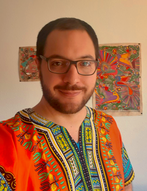
Emilio Pisanty-Alatorre (ICFO)
Emilio Pisanty studied his bachelor’s degree in physics at the Universidad Nacional Autónoma de México (UNAM) in Mexico City, with a thesis in quantum optics, and moved to Imperial College London to study an MRes degree in Controlled Quantum Dynamics. He presented his PhD in 2016, under the supervision of Misha Ivanov at Imperial College, examining the role of complex-valued trajectories in Coulomb-corrected strong-field methods. He is currently a postdoctoral researcher at ICFO in Barcelona, where he studies the effect of structured light in HHG as well as deeper studies into analytical methods for strong-field physics. |
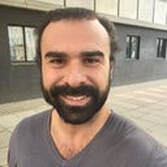
Marco Ruberti (Imperial College London)
Dr Marco Ruberti completed his master’s degrees in physics at the University of Pisa in Italy in 2010, with a thesis on quantum transport in mesoscopic systems. In 2011, he moved to Imperial College London to complete his PhD, which he defended in 2015 under the supervision of Dr Vitali Averbukh. The focus of his research is the study of fundamental ultrafast electronic processes occurring in atoms and molecules following excitation and/or ionization by ultrashort laser pulses. During his PhD, in collaboration with Prof. P. Decleva (University of Trieste), Marco developed a new theoretical and computational methodology focused on the first principles description of ultrafast correlated many-electron dynamics in the presence of intense laser fields, the B-spline ADC method. B-spline ADC combines the quantum chemistry, ab initio, description of electron correlation with an accurate description of the electronic continuum by means of the B-spline basis set. Dr. Ruberti is currently a postdoctoral researcher working in the field of attosecond physics at Imperial College London. His current research focuses on the concepts of quantum coherence and entanglement, and the role they play in the attosecond ionization dynamics of atoms and molecules and in the understanding of the experimental observations. |
